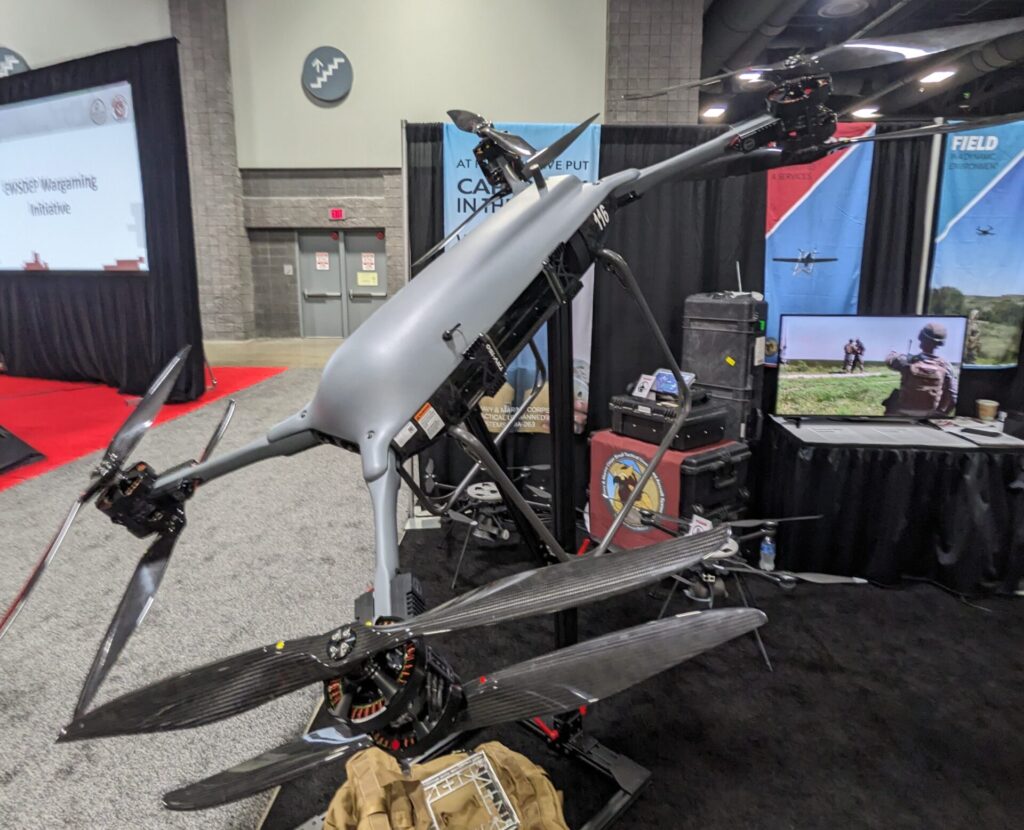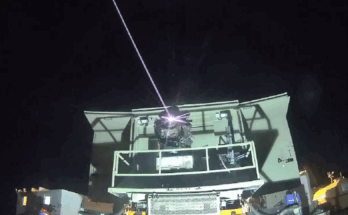
In attending two spring tradeshows just one week apart, — the Army Aviation Mision Solutions Summit (April 24th-26th) and Modern Day Marine (April 30th-May 2nd) — it was impossible to miss how the U.S. Army and Marine Corps are prioritizing the application of emerging technologies, especially unmanned aircraft systems (UAS) and the ability to counter them. The exhibit halls of both events prominently featured a generous variety of the latest and greatest UAS, many already in use by the armed forces. Also sharing the spotlight was a diverse set of systems designed to disrupt the UAS systems of potential adversaries, also known as counter-UAS (C-UAS).
Contemporary conflicts in Ukraine and Gaza have demonstrated just how critical UAS are to the future of warfare, and how important C-UAS has become. As UAS technologies rapidly develop and proliferate, the ability to counter these systems also becomes paramount, creating a cat-and-mouse-like trend of adversarial competition. Based on the number of exhibitors at these tradeshows displaying their UAS and C-UAS capabilities, along with ample interest and funding from the Defense Department, it’s clearly worth giving these technologies a closer look.
Unmanned Aircraft Systems
UAS, also known as unmanned aerial vehicles (UAV) or drones, are becoming increasingly important for the future of warfare due to several key advantages. These include reduced risk to human operators, lower operational costs, reduced observability, prolonged surveillance and reconnaissance, and the ability to overwhelm an enemy when launched en masse (aka drone swarms).
UAS can carry out a variety of mission sets and act as a force multiplier by providing additional capabilities such as aerial reconnaissance, target acquisition, communication relays, and logistical support. There are numerous different types of UAS, each designed for specific purposes and missions. Below are a few key variations to be aware of:
- Micro and Mini UAS: These are small, lightweight UAS designed for short-range operations. They are often used for surveillance, reconnaissance, and monitoring in urban or confined environments.
- Examples: Teledyne Flir’s Black Hornet or AeroVironment’s RQ-11 Raven
- Loitering Munitions: Loitering munitions, sometimes referred to as suicide drones, are a type of UAS that combine the features of a drone and a guided missile. Loitering UAS are designed to loiter or hover over an area for an extended period until a target is identified.
- Example: AeroVironment’s Switchblade 600
- Medium-Altitude Long-Endurance (MALE) UAS: MALE UAS are capable of flying at medium altitudes for extended periods, typically ranging from several hours to days. They are used for surveillance, reconnaissance, border patrol, and maritime patrol missions.
- Example: General Atomics’ MQ-9A “Reaper”
- High-Altitude Long-Endurance (HALE) UAS: HALE UAS operate at high altitudes (above 60,000 feet) and can remain airborne for extended durations, often days or weeks. They are used for long-range surveillance, communications relay, and environmental monitoring.
- Examples: Northrop Grumman’s Global Hawk and MQ-4C Triton
- Vertical Takeoff and Landing (VTOL) UAS: These UAS can take off and land vertically without needing a runway. They are suitable for operations in confined spaces or on ships where traditional takeoff and landing are not feasible.
- Short Takeoff and Landing (STOL) UAS: STOL UAS are aircraft designed to operate from short runways or improvised landing areas, including unprepared surfaces. These UAVs have the capability to take off and land in confined spaces, making them suitable for operations in austere or challenging environments where traditional runways are not available.
- Examples: General Atomics’s Mojave
Counter-UAS
C-UAS are designed to detect, track, identify, and mitigate threats posed by unauthorized or hostile UAS. The need for C-UAS has grown significantly due to the proliferation of recreational, commercial, and military drones. Malicious actors, including adversarial militaries, can leverage UAS for espionage, smuggling, or targeted attacks on critical infrastructure and personnel. Outside of military operation, C-UAS are also employed by law enforcement, and security agencies to protect facilities, sensitive areas, or even densely-populated events. Once a hostile UAS has been detected, there are several methods through which C-UAS systems eliminate the threat.
Below are a few key C-UAS technologies to be aware of:
- Kinetic: Kinetic C-UAS systems use physical force to intercept or disable hostile drones. This includes the classic method of shooting down hostile UAS with guns or missiles. It also includes the more contemporary approach of using drones that are specifically designed to collide with or capture hostile UAS.
- Examples: Anduril’s Roadrunner and Anvil systems
- Jamming: Jamming involves disrupting the communication signals between the drone and its operator or GPS signals used for navigation. These countermeasures emit electromagnetic signals that interfere with the drone’s radio frequencies, causing it to lose control or enter a failsafe mode.
- Examples: Dedrone’s DroneDefender or Flex Force’s Dronebuster
- RF Cyber Takeover: This method uses radio frequency cyber-takeover technology that allows an operator to remotely take full control of a rogue drone and land it safely in a predefined zone.
- Example: D-FEND Solutions’ EnforceAir
- Directed Energy: These systems employ focused beams of energy, such as lasers or high-power microwaves (HPM), to disable or disrupt drone components and functions.
The majority of examples referenced above could be seen on the exhibition floors at AAAA or Modern Day Marine. They represent some of the most cutting-edge advancements in the UAS and C-UAS markets. The abundance of systems on display clearly illustrates the diversity of new UAS and C-UAS technologies available to the U.S. military today. What’s more, autonomous and semi-autonomous systems can be expected to appear in greater numbers as the demand, and the technology, evolve further. A key concept to note is that as UAS evolve, C-UAS must adapt in kind, and the Defense Department must stay abreast of these evolutions to ensure continued dominance as unmanned systems become evermore present on the battlefield.




